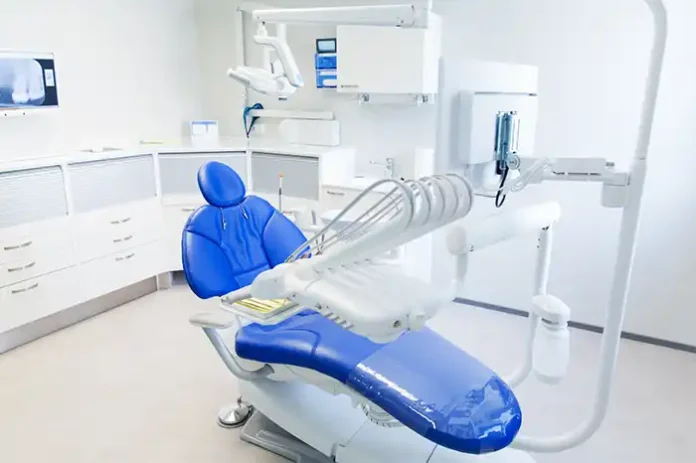Modern dentistry has undergone transformative changes that have significantly impacted the patient’s journey in a dental setting. With advancements in technology, dental procedures have become more efficient and less invasive, enhancing the overall experience for patients. This article explores how these innovations have improved dental care while reshaping patient expectations and experiences.
Historically, dental care was perceived as a necessary evil due to the discomfort and anxiety it often invoked. However, with the introduction of modern techniques and technologies, patient comfort has increased substantially. These advancements go beyond just procedures, as they encompass administrative efficiencies and better health outcomes.
As we dive deeper into the current state of dentistry, it is essential to understand how these changes address the needs of a diverse patient population. A staggering 36 million Americans are entirely without teeth, illustrating the demand for accessible and effective dental care solutions. The following sections will detail how modern dentistry meets these challenges.
1. Improved Patient Comfort
One of the most significant advancements in modern dentistry is the improvement in patient comfort through innovative technologies. Procedures that once seemed daunting are now often quick and painless, thanks to advanced anesthesia and minimally invasive techniques. These changes have not only reduced anxiety but also shortened recovery times, contributing positively to patients’ health.
According to the American Dental Association, the majority of adults plan to visit the dentist annually, reflecting increased trust in today’s dental procedures. This shift is partly due to technology like laser dentistry, which allows for precision treatments with minimal discomfort. These innovations have transformed dental visits from anxious experiences into tolerable, if not pleasant, appointments.
Furthermore, patient comfort extends beyond physical sensations to encompass holistic care approaches. Many dental practices now employ personalized treatment plans tailored to individual needs, making dental care accessible and understandable for every patient. This approach helps to mitigate fears and encourages consistent oral health maintenance.
2. Technological Advancements in Dentistry
Technological advancements play a crucial role in revolutionizing the dental experience for both practitioners and patients. Digital X-rays, for instance, provide quicker results with reduced radiation exposure, allowing for efficient and safe diagnostics. These tools facilitate better communication between dentists and patients, enabling informed decisions regarding treatment options.
Beyond diagnostics, technology has also enhanced the procedural aspect of dentistry. Techniques such as 3D printing and computer-aided design are now commonplace in creating dental prosthetics and aligners, offering custom solutions with exceptional accuracy. These technologies have democratized access to specialized dental care, improving overall dental health.
A further advantage of technological progress is the integration of digital record-keeping, streamlining administrative tasks and reducing errors. This efficiency allows more time for patient interaction and personalized care, aligning with the broader goal of improving patient health outcomes.
Read Also: How to Keep your Teeth Healthy
3. Access to Quality Care
Despite these advancements, access to quality dental care remains a critical issue in many regions. In the United States, there are approximately 60.84 dentists for every 100,000 residents, indicating a need for more professionals to meet the growing demand for dental services. Expanding access to care is crucial for addressing the oral health needs of underserved populations.
Efforts to improve accessibility include the implementation of tele-dentistry, which allows patients to receive consultations and diagnostic services remotely. This innovation is particularly beneficial for individuals living in rural areas or those with mobility challenges. By eliminating geographical barriers, tele-dentistry supports equitable health opportunities for all.
Furthermore, advocacy and educational initiatives aim to raise awareness of the importance of oral health, encouraging regular dental visits. By promoting preventive care, these efforts help to reduce the incidence of oral diseases and improve overall public health metrics, emphasizing the evolving role of modern dentistry in fostering community wellness.
Final Words
The evolution of modern dentistry has fundamentally changed the patient experience, promoting comfort, accessibility, and superior health outcomes. Technology and innovative approaches have revolutionized the way dental care is delivered, transforming perceptions and expectations. Patients now benefit from a broader range of services that promote overall wellness and vitality.
As modern dentistry continues to advance, the focus remains on improving patient experiences and breaking down barriers to care. The industry is poised to further integrate emerging technologies and practices, making dental services more personalized and effective. By addressing both existing and emerging oral health challenges, modern dentistry continues to enhance the future of patient care.
Ultimately, ensuring that everyone has access to high-quality dental care is pivotal to improving public health outcomes. As the landscape of dentistry evolves, it is crucial to prioritize strategies that foster inclusivity, affordability, and excellence. This commitment will pave the way for healthier communities and a more robust public health system.




